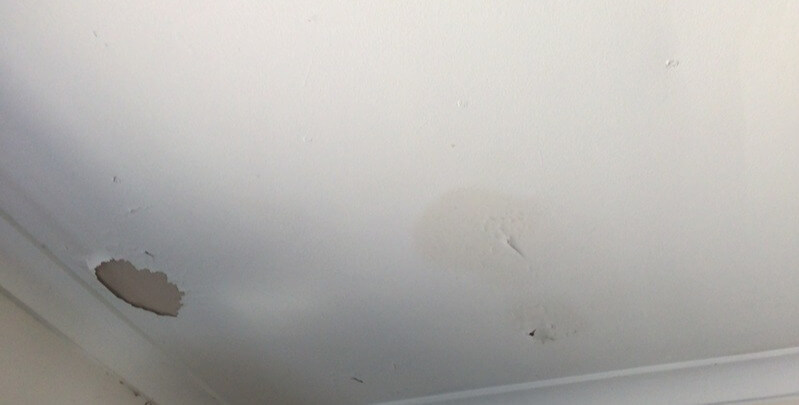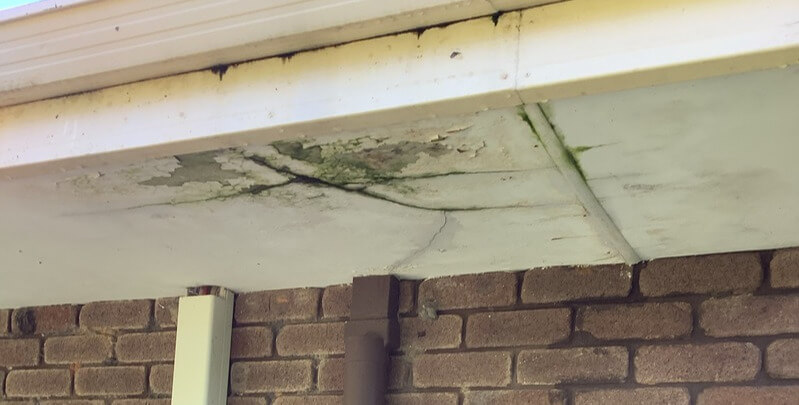Who to Call for a Water Leak in Your Ceiling
Water leaks can be a homeowner's worst nightmare, causing extensive damage to properties and leading to costly repairs. One common area where a water leak occurs is the ceiling.
Detecting and addressing these leaks promptly is crucial to prevent further damage.
This guide will explore the causes of a water leak in the ceiling and provide the necessary information on who to call for professional assistance. Whether it’s a concealed leak, a dripping tap, or a running toilet, we’ve got you covered!
Identifying Water Leaks
Water leaks in ceilings can be elusive and may not always be immediately visible. However, identifying the telltale signs can help you take prompt action and minimise potential damage. Here are some key water pooling indicators to look out for:
- Damp patches
- Water dripping or pooling
- Discolouration or stains
- Unexpectedly high water bill
- Sudden decrease in water pressure
It’s important to remember that water leaks in ceilings and walls may not always be immediately visible, especially if concealed within the structure. Therefore, it’s crucial to stay vigilant and look for these signs regularly to catch any leaks early on.
If you notice these signs, you should immediately contact expert plumbing services to assess and address the issue. They have the expertise and specialised equipment to locate and repair the source of the leak, ensuring that further damage is minimised and your property is restored to a safe and dry condition.

Common Causes of Water Leaks
Water leaks in ceilings can stem from various issues, and identifying the root cause is crucial for effective repairs. Understanding the common causes of these leaks can help you pinpoint the problem and communicate it more accurately to a professional plumber.
Here are some frequent culprits behind water leaks in ceilings:
- Faulty hot water systems
- Concealed leaks in pipes
- Malfunctioning or running toilet cistern
- Dripping taps
- Damaged air conditioning units
- Irrigation system problems
Identifying the underlying cause of the water leak is essential for efficient repairs. When communicating with an expert, provide them with details about any recent changes, signs, or observations related to the water leak.
This information will aid them in diagnosing water problem accurately and implementing the necessary repairs.
DIY Checks: Water Meter and Toilet Bowl
If you suspect a water leak in your ceiling, it’s worth conducting simple do-it-yourself checks before contacting a professional plumber. These initial checks can help you gather valuable information about the presence of a leak and assist the plumber in diagnosing the issue more accurately. Here are two checks you can perform on your own:
Water Meter Check
A water meter is a valuable tool for detecting leaks within your property. Follow these steps to find your water meter and conduct a water meter check:
- Before proceeding with the check, ensure all your home’s faucets, showers, toilets, washing machines, and other water-consuming appliances are turned off.
- The water meter is usually positioned outside your property, near the property boundary or within a meter box. Once you’ve located it, remove the meter box cover, if present, to access the meter.
- Take a close look at the meter’s display. Some water meters have a small red or black triangle that spins when water flows. Alternatively, you may have a digital meter that shows numbers. If there is no water being used, the display should remain static. If you notice any movement or numbers changing, it indicates water flow, suggesting a possible leak.
If the water meter shows continuous movement even when all water-consuming devices are turned off, it strongly indicates that you may leak somewhere on your property.

Toilet Bowl Check
A leaking toilet is one of the common sources of water leaks. You can perform a simple check on your toilet bowl to test and determine if there’s a leak:
- Start by ensuring the toilet cistern is full. Place a few sheets of toilet paper near the wall at the back of the bowl or pour a few drops of food colouring in the tank. Avoid flushing the toilet for a few hours or until the subsequent use.
- After the waiting period, check the toilet paper. If it remains dry, there is likely no leak. However, if the toilet paper becomes wet or shows signs of discolouration, it indicates a leak in the toilet system, such as a faulty valve or seal.
Performing these simple checks allows you to gather vital information to discuss with the trusted plumber when you contact them. It gives them a better understanding of the potential sources of the leak and aids in the diagnostic process, leading to more efficient and accurate repairs.
Remember, while these DIY checks can provide initial insights, consulting a professional for a comprehensive assessment and professional repairs is essential.
When to Call a Licensed Plumber
While it’s commendable to perform DIY checks, there are instances when water leaks in ceilings require further investigation and the expertise of a certified plumber.
These professionals possess the knowledge, experience, and specialised tools to handle complex plumbing issues. Here’s when you should reach out for professional assistance:
Hidden Leaks
If you suspect a hidden leak in your ceiling, such as water seeping through but with no visible signs, it’s crucial to call a plumbing service provider.
They have the expertise to identify and locate concealed leaks using advanced techniques like thermal imaging or moisture detection devices. Detecting and addressing hidden leaks promptly can prevent further damage to your ceiling and property.
Extensive Water Damage
If the water leak in your ceiling has caused significant damage, such as sagging or bulging ceilings, mould growth, or compromised structural integrity, it’s crucial to involve an expert. They will repair the leak and assess and mitigate the damage, ensuring your property is restored safely and dry.

Repairs Involving Plumbing System
A licensed plumber should be contacted if the water leak in your ceiling is connected to a larger plumbing system issue, such as faulty pipes, malfunctioning valves, or a damaged hot water system.
They have the expertise to assess the entire plumbing system, diagnose the root cause, and perform the necessary repairs or replacements to ensure the water supply problem is resolved effectively.
Preventative Maintenance
Even if the water leak in your ceiling has been fixed, it’s advisable to consult a specialist for preventative maintenance. They can inspect your plumbing system, identify potential vulnerabilities or leaks in other areas, and provide recommendations to maintain the integrity of your plumbing system. This proactive approach helps prevent future water leaks and costly repairs.
Remember, timely intervention by a professional can save a property owner from costly repairs and protect the structural integrity of your property.
In Conclusion
Water leaks in ceilings demand immediate attention to prevent further damage and costly repairs. Identifying the cause of the leak and contacting a licensed plumber is vital for an efficient resolution of water use. By taking prompt action and seeking professional help, you can mitigate the damage caused by water leaks and maintain a healthy, leak-free property.
Remember, when it comes to water leaks in ceilings, don’t hesitate to call an expert plumbing service contractor who can provide the expertise needed to address the issue effectively.
Please note: This information is provided for advice purposes only. Regulations differ from state to state, so please consult your local authorities or an industry professional before proceeding with any work. See our Terms & Conditions here.